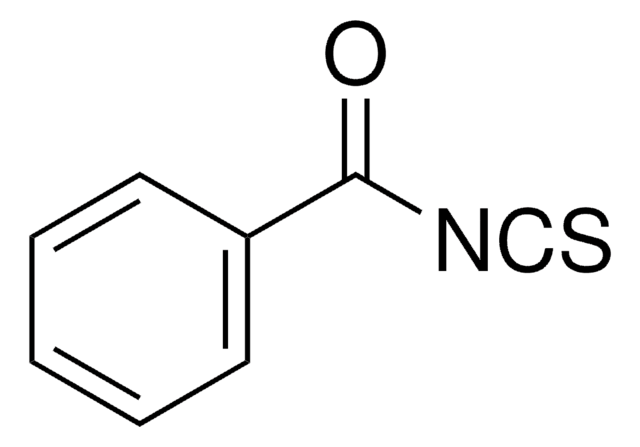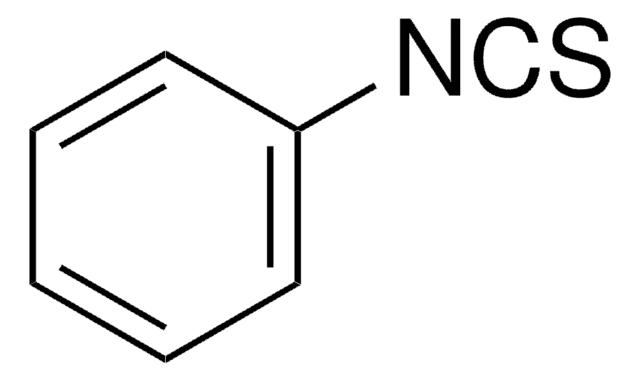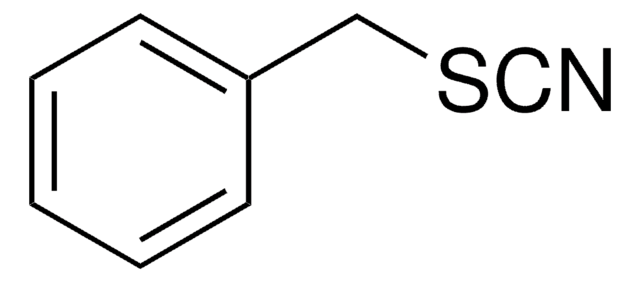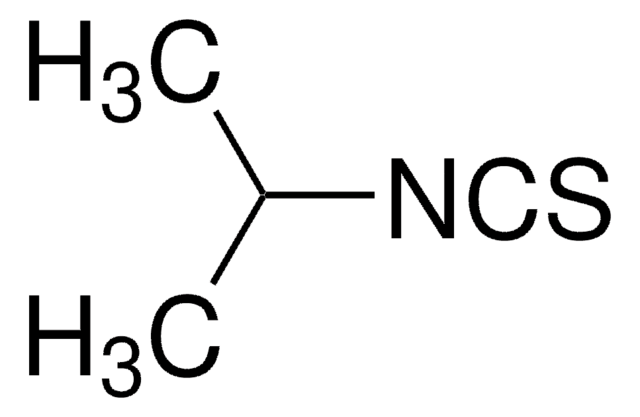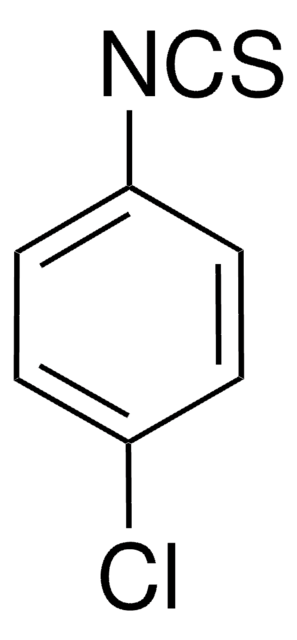252492
Benzyl isothiocyanate
98%
Sinónimos:
Benzyl mustard oil, Isothiocyanotaomethylbenzene
About This Item
Productos recomendados
Nivel de calidad
Ensayo
98%
Formulario
liquid
índice de refracción
n20/D 1.601 (lit.)
bp
242-243 °C (lit.)
densidad
1.125 g/mL at 25 °C (lit.)
grupo funcional
amine
isothiocyanate
phenyl
temp. de almacenamiento
2-8°C
cadena SMILES
S=C=NCc1ccccc1
InChI
1S/C8H7NS/c10-7-9-6-8-4-2-1-3-5-8/h1-5H,6H2
Clave InChI
MDKCFLQDBWCQCV-UHFFFAOYSA-N
¿Está buscando productos similares? Visita Guía de comparación de productos
Categorías relacionadas
Descripción general
Aplicación
- N
- -benzylthioureas by reacting with various amines.
- N-benzyl-O-alkyl carbamates by treating with long-chain alcohols.
- 3-mercapto-1,2,4-triazole building block by reacting with formylhydrazine via acyl thiosemicarbazide intermediate formation.
- S-(N-benzylthiocarbamoyl)-L-glutathione and S-(N-benzylthiocarbamoyl)-L-cysteine.
Palabra de señalización
Danger
Frases de peligro
Consejos de prudencia
Clasificaciones de peligro
Acute Tox. 4 Oral - Eye Irrit. 2 - Resp. Sens. 1 - Skin Irrit. 2 - Skin Sens. 1 - STOT SE 3
Órganos de actuación
Respiratory system
Código de clase de almacenamiento
10 - Combustible liquids
Clase de riesgo para el agua (WGK)
WGK 3
Punto de inflamabilidad (°F)
222.8 °F
Punto de inflamabilidad (°C)
106 °C
Equipo de protección personal
Eyeshields, Faceshields, Gloves, type ABEK (EN14387) respirator filter
Elija entre una de las versiones más recientes:
¿Ya tiene este producto?
Encuentre la documentación para los productos que ha comprado recientemente en la Biblioteca de documentos.
Los clientes también vieron
Global Trade Item Number
| Número de referencia del producto (SKU) | GTIN |
|---|---|
| 252492-1G | |
| 252492-25G | 4061825969961 |
| 252492-500G | |
| 252492-5G | 4061825969978 |
Nuestro equipo de científicos tiene experiencia en todas las áreas de investigación: Ciencias de la vida, Ciencia de los materiales, Síntesis química, Cromatografía, Analítica y muchas otras.
Póngase en contacto con el Servicio técnico


